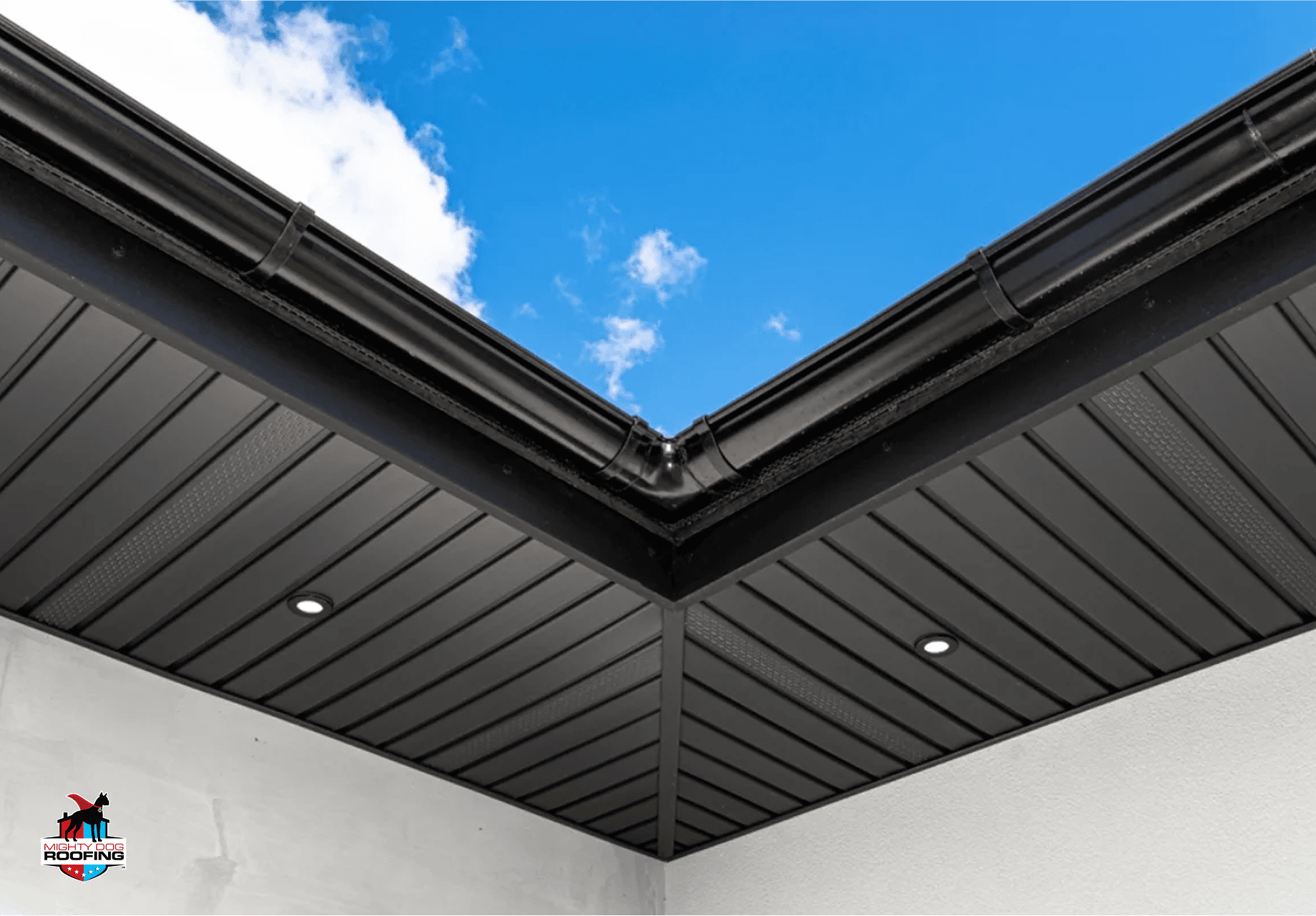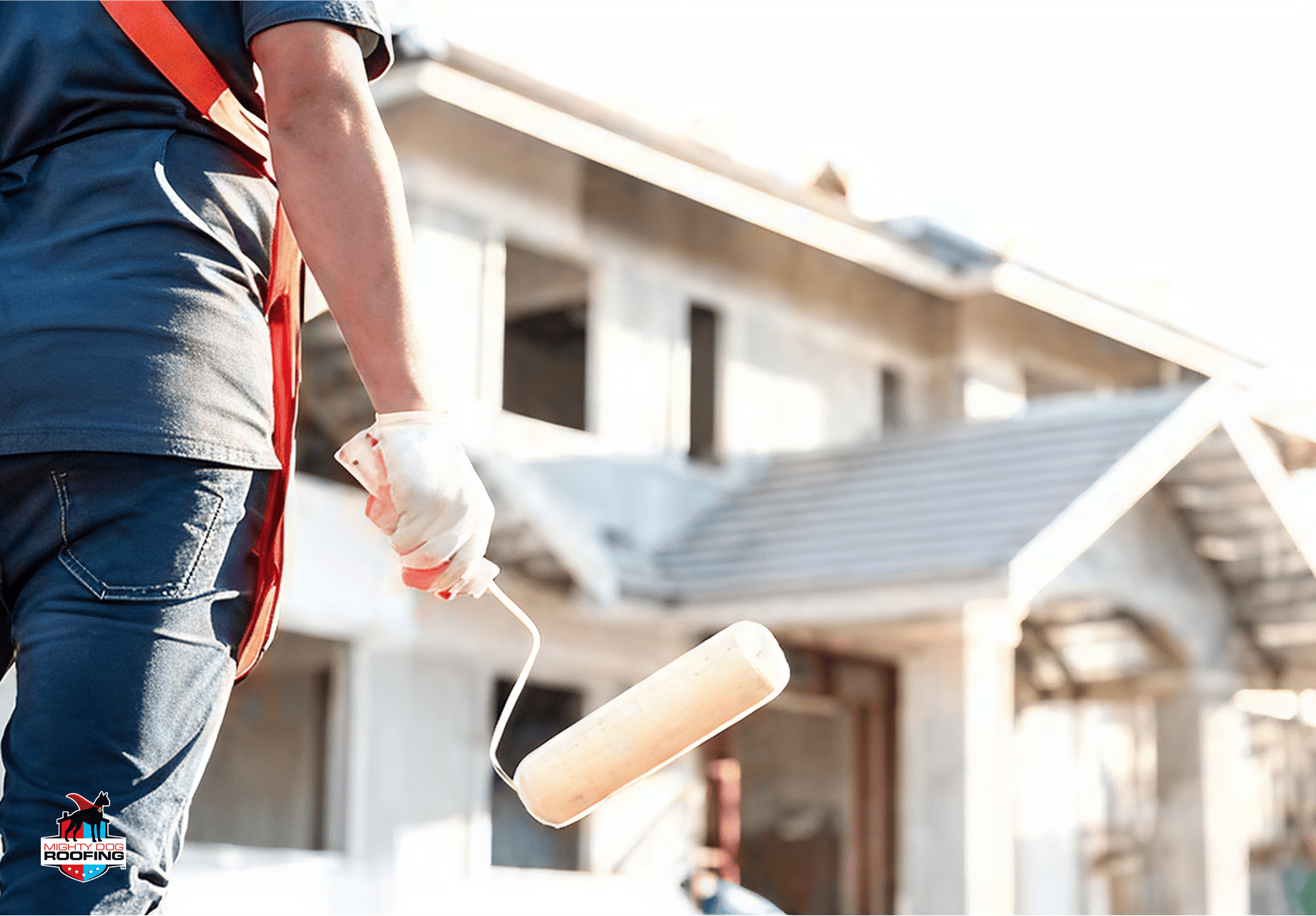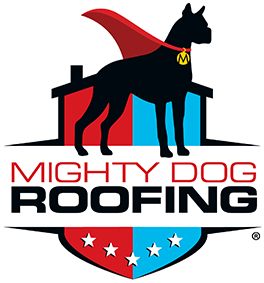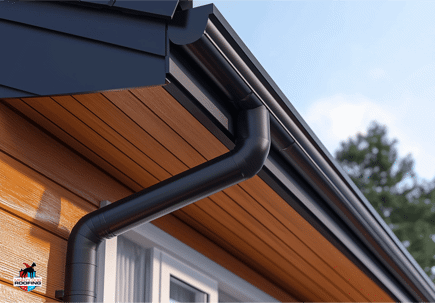When homeowners contemplate roofing installations, they typically focus their attention on shingles, while the soffit and fascia components—essential guardians of your roof's defense mechanism—remain largely unnoticed until issues develop. Here at Mighty Dog Roofing of South Jersey, we understand these fundamental elements shield against moisture penetration, ensure proper ventilation, provide crucial gutter support, and enhance overall curb appeal. Our comprehensive roof inspection methodology identifies potential problems with these critical components early on, allowing preventative maintenance or timely repairs that help avoid expensive damage while maximizing your entire roofing system's durability. Superior roofing materials combined with expert installation techniques remain fundamental for preserving your home's structural soundness.
The Critical Function of Soffit and Fascia Systems
Appropriate ventilation and protective elements constitute vital aspects of your comprehensive roofing system. The soffit and fascia effectively connect the roof edge to exterior walls, defending structural components against weather-related deterioration. These ventilated areas assist in regulating attic temperature, preventing unwanted moisture accumulation, and boosting energy efficiency—frequently decreasing cooling expenses by approximately 30% during South Jersey's warm summer months.
At Mighty Dog Roofing, we've witnessed how high-quality fascia boards effectively reinforce your gutter system while simultaneously protecting roof edge systems from harmful moisture infiltration. Understanding these as essential protective features rather than simple decorative elements is crucial, as neglecting them typically results in extensive structural complications requiring costly residential roof installation repairs—expenses significantly exceeding those of routine maintenance investments. Experienced residential roofing contractors comprehend how these elements integrate with your overall exterior trim solutions to deliver comprehensive protection.

Signs of Deterioration and Performance Issues
Spotting soffit and fascia problems at an early stage can prevent thousands in potential repair expenditures. Systematic inspection reveals warning indicators that signal when these crucial components demand attention before more extensive roofing damage occurs.
Visual Indicators of Soffit Problems
A consistent roof inspection must incorporate examining your soffit system to avoid expensive damage. At Mighty Dog Roofing, we've noted that varying materials exhibit distinct issues—wooden components develop decay and warping, vinyl displays cracking and UV-related fading, while aluminum demonstrates corrosion and denting. These indicators reveal both underlying causes and appropriate remediation strategies for your particular situation. Prompt soffit replacement can prevent these concerns from escalating into more serious complications affecting additional components of your home's structure.
Top 5 Warning Signs of Soffit Deterioration:
- Paint Failure - Flaking, bubbling, or blistering paint indicates moisture has infiltrated the material and compromised its protective coating.
- Visible Gaps - Openings between panels or where the soffit meets the house create entry possibilities for pests and allow moisture penetration.
- Sagging Sections - Drooping areas indicate structural integrity has been compromised, frequently due to water damage or inadequate installation support.
- Pest Evidence - Nesting materials, droppings, or noticeable insect activity around soffit vents suggest unwanted visitors exploiting vulnerabilities.
- Restricted Airflow - Obstructed vents or insufficient air circulation through soffit ventilation systems leads to attic moisture control issues and diminished energy efficiency.
Seasonal timing impacts problem detection—autumn inspections uncover pest intrusions before winter, while spring examinations reveal moisture damage from temperature fluctuations. For South Jersey coastal properties, we advise checking for condensation during seasonal transitions and ice formation during winter months. These indicators expose ventilation issues before visible damage manifests, enabling preventative rather than reactive repairs. A second annual roof inspection is frequently recommended for homes in regions with extreme weather conditions to monitor attic moisture control and ventilation effectiveness.
Recognizing Fascia Failure
Fascia deterioration advances rapidly when exposed to moisture, making early identification essential. Warning signs initially appear as gutter problems—sagging, detachment, or overflow—before becoming apparent in the fascia boards as decay, warping, paint deterioration, or gaps. Materials exhibit different damage patterns: wood develops soft spots, composite materials delaminate, and aluminum corrodes at fastening locations.
Since fascia condition directly impacts roof edge integrity and indicates potential roofing issues along eaves, our South Jersey technicians examine the crucial junction between fascia, roof decking, and rafter ends by testing for softness, inspecting for wall staining, and confirming proper flashing to prevent hidden structural damage. When problems are detected, timely fascia repair can prevent more extensive deterioration. Effective eave protection requires maintaining fascia boards in optimal condition to support your gutter system and safeguard underlying structural elements.
Material Options for Modern Applications
Today's marketplace offers an extensive selection of soffit and fascia materials that surpass traditional options in both longevity and visual appeal. Selecting appropriate products for your residence involves balancing performance characteristics, maintenance requirements, and aesthetic considerations to achieve optimal protection and value.
Comparing Soffit Materials and Designs
Property owners now have access to numerous soffit materials with advantages over conventional choices. While wood was previously standard, contemporary alternatives like vinyl, aluminum, fiber cement, and composite products now dominate the market with enhanced performance and reduced maintenance. Each offers specific advantages – vinyl provides value with good moisture resistance; aluminum excels in coastal environments; fiber cement delivers fire resistance; and composites combine wood's appeal with superior weather resilience. For South Jersey homes, Mighty Dog Roofing evaluates your exposure conditions, architectural style, and performance requirements to recommend the ideal solution, including when soffit replacement might be necessary.
Comparative Analysis of Soffit Material Options
Material | Lifespan | Maintenance | Ventilation Options | Best Application |
Vinyl | 20-30 years | Low: occasional cleaning | Continuous or individual vents | General use, budget-conscious applications |
Aluminum | 30-40+ years | Minimal: periodic inspection | Custom vent patterns available | Coastal areas, high-moisture environments |
Fiber Cement | 50+ years | Moderate: repainting every 7-10 years | Limited vent designs | Fire-prone areas, historic renovations |
Wood | 10-15 years | High: regular sealing, painting | Custom-cut vents required | Historic properties, traditional designs |
Composite | 30+ years | Low: occasional cleaning | Various options available | Premium installations, harsh environments |
Beyond materials, ventilation design influences both performance and aesthetics. Installing continuous roof ventilation delivers optimal airflow for most residential roofing needs, with building codes requiring 1 square foot of ventilation per 150 square feet of attic space. For enclosed eaves, porch ceilings, or custom architectural features, we strategically position ventilated panels that maintain appeal while ensuring adequate airflow. Contemporary ventilation products come in various styles (beaded, v-groove, smooth), textures (wood grain, stucco), and colors that complement all architectural styles, delivering both functionality and curb appeal.
Advanced Fascia Systems and Materials
Contemporary fascia options now outperform traditional wood with composite materials, aluminum systems, and cellular PVC alternatives offering superior rot resistance and minimal maintenance for decades. Dimensions matter in fascia selection—taller 6-8 inch profiles create bold statements while supporting gutters effectively, while standard 5-inch boards suit most homes and maintain proper water runoff. Today's finishing options include factory-applied colors, wood-mimicking textures, and specialized coatings that maintain color stability without fading.
Integrated fascia-gutter systems represent a significant innovation, combining components into seamless water management solutions that eliminate failure points while enhancing exterior trim solutions. Your home's exposure should guide material selections—north-facing areas with higher moisture require synthetic materials with mold resistance, while south-facing sections need formulations with color stability and minimal expansion to prevent warping under intense UV exposure. Advanced roof edge systems now integrate seamlessly with fascia boards for a more comprehensive weather barrier.

Installation Best Practices for Maximum Performance
Quality installation determines both the appearance and longevity of soffit and fascia systems. Our techniques address three challenges: moisture control, expansion allowance, and secure attachment that withstands environmental stress. Proper preparation establishes a solid foundation, while integration with other roofing components forms a complete weather barrier. At Mighty Dog Roofing, our residential roofing protocols adhere to these best practices:
- Pre-Installation Assessment and Preparation: Inspection of existing structures—focusing on rafter ends and roof decking—identifies any water damage before installation commences. This preparation prevents premature failure and establishes a solid foundation for new components.
- Material-Specific Fastening Techniques: Different materials require specific attachment methods. Wood needs stainless or galvanized fasteners in solid framing. Vinyl requires fasteners that accommodate thermal expansion. Aluminum needs precise attachment to prevent oil-canning while remaining secure. Proper techniques are essential during roofing installations to ensure long-term performance.
- Ventilation System Integration: Effective soffit ventilation works together with other roof ventilation components. We implement a 1:150 ratio of ventilation to attic area, adjusted for local climate conditions. Proper insulation baffle positioning ensures unobstructed airflow from soffit vents to attic spaces. Our approach to roof ventilation concentrates on creating balanced airflow throughout the entire attic environment.
- Weather-Appropriate Installation Timing: Seasonal conditions impact quality. Spring and fall offer ideal temperatures for most materials. Summer installations require extra expansion allowance for vinyl, while winter installations demand specialized sealing for proper adhesion.
Selecting installers with specific soffit and fascia expertise—not just general contractors—is crucial for success. Roofing specialists understand the integration points between these components and your existing siding, gutters, and roof edge details. This knowledge is particularly valuable for homes with complex architecture or when addressing previous installation problems. With proper installation, your complete roofing system provides maximum protection while enhancing your home's appearance. For comprehensive residential roof installation projects, the expertise to properly integrate soffit and fascia components can distinguish between an average job and superior performance.
Maintenance Strategies for Extended Lifespan
Regular maintenance extends soffit and fascia performance while preserving your home's appearance. Materials require specific care—vinyl needs gentle soap cleaning, aluminum requires soft-bristle brushing, and wood demands inspection for paint failure and timely resealing. Homeowners can manage several tasks themselves: removing debris from vents, checking for pests, and monitoring for moisture signs like discoloration. Professional services offer comprehensive inspections that identify issues early, equipment for hard-to-reach areas, and specialized treatments for different materials.
Strategic timing improves effectiveness—spring cleaning eliminates winter buildup, summer checks verify ventilation during peak heat, fall maintenance ensures clear airflow paths before winter, and post-storm inspections identify damage requiring prompt attention. Proper eave protection is essential to prevent moisture intrusion that could affect the entire structure. Maintain detailed records to support warranty claims and guide future decisions—document professional services, preserve before/after photos, and retain receipts to maximize roofing value and extend your complete roofing system lifespan.
Investing in Complete Roof System Protection
Quality soffit and fascia systems represent much more than decorative elements—they're critical defensive components of your comprehensive roofing system, safeguarding structural elements while improving performance through ventilation and moisture control. Modern materials surpass traditional options with enhanced durability, reduced maintenance requirements, and improved aesthetics that complement your home's architectural style. Don't wait for visible damage; proactively evaluate your soffit and fascia during routine roofing inspections to address issues before they cause costly structural problems.
At Mighty Dog Roofing of South Jersey, our specialists deliver expert consultation on soffit and fascia solutions customized to your home's design, local climate challenges, and preferences—ensuring your complete roofing system provides maximum protection and curb appeal for years to come. With extensive experience in high-quality roofing, we understand how every component works together to protect your investment. Call us today at 856-726-4876 to schedule your comprehensive soffit and fascia evaluation.


